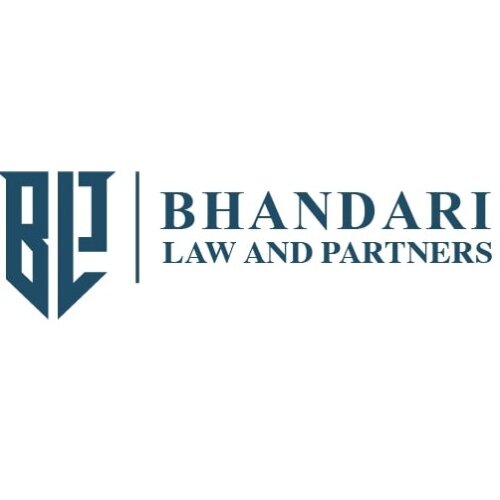Best Restructuring & Insolvency Lawyers in Nepal
Share your needs with us, get contacted by law firms.
Free. Takes 2 min.
Or refine your search by selecting a city:
List of the best lawyers in Nepal
About Restructuring & Insolvency Law in Nepal
Restructuring and insolvency law in Nepal provides a legal framework for businesses and individuals facing serious financial difficulties. These laws are designed to ensure fair treatment of creditors and debtors, maintain the stability of the financial system, and encourage economic recovery through lawful, structured processes. Restructuring allows businesses to reorganize their operations, assets, or liabilities to return to profitability. Insolvency, on the other hand, addresses the procedures for dealing with assets and liabilities when an entity can no longer meet its financial obligations. Key legislation in Nepal includes the Insolvency Act, 2063 (2006), which lays out rules for the declaration of insolvency, restructuring, liquidation, and other related procedures. Nepalese law seeks to balance the interests of all stakeholders and encourage business revival wherever possible.
Why You May Need a Lawyer
Navigating restructuring and insolvency can be complex, especially given the intricate legal requirements and the need for swift, appropriate action. You may require a lawyer for various reasons, including:
- Your company or business is unable to meet its debts as they fall due.
- You are a creditor seeking to recover debts from an insolvent business.
- You are involved in disputes regarding asset distribution or creditor claims.
- You wish to explore restructuring options to revive your struggling business.
- You are unfamiliar with the procedural and documentation requirements under the law.
- You need representation in insolvency or liquidation proceedings before regulatory authorities or courts.
- You have received a notice of insolvency proceedings against you or your business partner.
A qualified lawyer can provide critical guidance, help protect your rights, and ensure compliance with Nepalese laws throughout the restructuring or insolvency process.
Local Laws Overview
Restructuring and insolvency in Nepal are primarily governed by the Insolvency Act, 2063 (2006). The Act applies to companies registered in Nepal and outlines both voluntary and involuntary methods for insolvency and restructuring. Key legal aspects include:
- Filing for Insolvency: Either the debtor company, creditors, or shareholders can file an application for insolvency in court.
- Appointment of Insolvency Practitioner: An insolvency practitioner is appointed to oversee the process, ensure fair asset distribution, and, where appropriate, propose a restructuring plan.
- Restructuring Procedures: Offers financially distressed businesses a chance to reorganize and repay debts through approved restructuring plans.
- Liquidation: If restructuring is deemed unfeasible, the company may be liquidated. The assets are sold and proceeds are distributed according to the creditors' hierarchy set by law.
- Creditor Rights: Creditors have the right to present claims, participate in creditor meetings, and vote on proposed restructuring or liquidation plans.
- Role of the Court: The appropriate District Court hears insolvency and restructuring petitions and supervises the procedures.
- Impact on Directors and Management: Upon initiation of insolvency, certain powers of the company's management are suspended or transferred to the insolvency practitioner.
Adhering strictly to these legal procedures is crucial to ensure a smooth transition through financial distress.
Frequently Asked Questions
What is the difference between restructuring and insolvency?
Restructuring is a process where a financially troubled business reorganizes its finances, operations, or structure to regain stability. Insolvency occurs when a business or individual cannot meet debt obligations and may result in winding up or liquidation.
Who can apply for insolvency proceedings in Nepal?
Applications for insolvency can be made by the debtor company itself, its creditors, or its shareholders, as provided under the Insolvency Act.
What happens to a company once insolvency proceedings are initiated?
Once insolvency is declared, the court appoints an insolvency practitioner. The management's powers are suspended, assets are assessed, and either a restructuring plan is proposed or liquidation is initiated.
How long does the insolvency process typically take in Nepal?
The duration varies depending on the complexity of the case. Some restructuring or liquidation processes can take several months or more, especially if disputes arise among creditors or other stakeholders.
Can a company recover after entering into insolvency?
Yes, if a viable restructuring plan is approved and successfully implemented, the company can recover and resume normal business operations.
What are the rights of creditors in an insolvency case?
Creditors can submit claims, participate in meetings, examine proposals, and vote on restructuring or liquidation plans. They also have the right to appeal certain decisions in court.
What are the duties of an insolvency practitioner?
The practitioner takes charge of the company’s management during insolvency, oversees asset valuation and distribution, and ensures legal procedures are followed throughout.
What happens if restructuring is not possible?
If a viable restructuring plan cannot be agreed upon, the company proceeds to liquidation. All assets are sold and proceeds are used to settle debts in accordance to statutory priorities.
Are personal assets of company directors at risk during insolvency?
Generally, only company assets are liable, unless fraud or wrongful conduct by directors is proven. In such cases, directors may be personally liable.
Is court involvement always necessary in insolvency cases?
Yes, the court plays a central role in declaring insolvency, appointing practitioners, supervising the process, and resolving disputes.
Additional Resources
If you are seeking help in the area of restructuring and insolvency in Nepal, the following resources and organizations can be valuable:
- The Office of the Company Registrar - Provides guidance on company compliance and registration matters.
- The Supreme Court and relevant District Courts - Deal with insolvency and restructuring applications.
- Insolvency Practitioners Association of Nepal - Professional body for insolvency practitioners.
- Nepal Law Society - Resource for legal advice, lawyer directories, and publications.
- Nepal Rastra Bank - For financial regulatory matters affecting banks and financial institutions under distress.
Next Steps
If you find yourself facing financial distress, considering restructuring for your business, or are a creditor seeking to recover debts from an insolvent company, the following steps are advisable:
- Gather relevant financial and legal documents pertaining to your business or claim.
- Consult a qualified legal professional experienced in restructuring and insolvency in Nepal.
- Discuss your situation openly and seek tailored advice on your legal options and potential outcomes.
- Follow your lawyer's guidance to file or respond to insolvency applications as needed.
- Remain proactive throughout the process, participating in creditor meetings and staying informed of all proceedings.
Acting promptly and seeking expert legal assistance can help safeguard your rights and optimize outcomes, whether you are attempting to revive a business or recover debts.
Lawzana helps you find the best lawyers and law firms in Nepal through a curated and pre-screened list of qualified legal professionals. Our platform offers rankings and detailed profiles of attorneys and law firms, allowing you to compare based on practice areas, including Restructuring & Insolvency, experience, and client feedback.
Each profile includes a description of the firm's areas of practice, client reviews, team members and partners, year of establishment, spoken languages, office locations, contact information, social media presence, and any published articles or resources. Most firms on our platform speak English and are experienced in both local and international legal matters.
Get a quote from top-rated law firms in Nepal — quickly, securely, and without unnecessary hassle.
Disclaimer:
The information provided on this page is for general informational purposes only and does not constitute legal advice. While we strive to ensure the accuracy and relevance of the content, legal information may change over time, and interpretations of the law can vary. You should always consult with a qualified legal professional for advice specific to your situation.
We disclaim all liability for actions taken or not taken based on the content of this page. If you believe any information is incorrect or outdated, please contact us, and we will review and update it where appropriate.
Browse restructuring & insolvency law firms by city in Nepal
Refine your search by selecting a city.

















